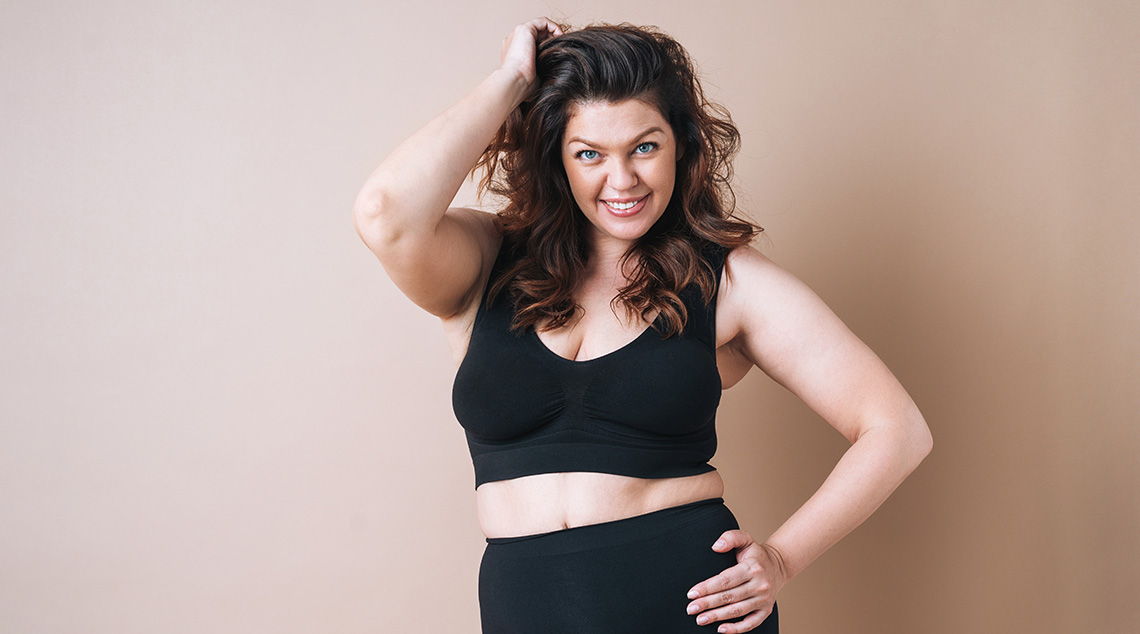How to embrace body shape changes as you age
Body shape changes are inevitable throughout life’s stages. Here’s how to be gentle with yourself and embrace your changing body shape with confidence.
As the saying goes, the only constant in life is change.
And it’s no different when it comes to our bodies, which are in a state of flux throughout our days on earth.
Most of us probably realise that accepting ourselves as we are is a healthy approach but, while that’s nice in theory, it can feel easier said than done — especially if your clothes seem to have mysteriously shrunk in the wash.
Why some body shape changes are inevitable
Our body shape changes naturally as we age.
Body positive personal trainer and coach Shreen El Masry says it would be weird if, as individuals, we didn’t grow, change, get stronger, softer and wear the marks of our experiences as we go through life.
The same goes for our physiques.
“Our bodies are meant to change from puberty to adulthood, through pregnancy and menopause, and again in old age — not to mention the changes that come with so many other varied lifestyle changes and factors,” Shreen says.
“Non-diet” dietitian Susan Williams, of Meg & Susan, sees many clients who are unhappy about their changing bodies, which can lead to problematic eating or dieting.
“It does stem often from that poorer body image, which now we see at these major transition points, particularly for women,” Susan says.
“So, adolescence, around weddings, marriage, pregnancy and childbirth, and where I am right now — perimenopause.”
In some ways, no thanks to social media, we’ve lost the connection to what is “normal”, Susan adds.
“It’s almost like we’ve had this relentless exposure to ‘perfect bodies’ and they’re the only ones allowed to do cool stuff,” she says.
How to embrace your changing body shape
Remind yourself of what is ‘normal’
How do you stop worrying about not being a supermodel and get on with confidently living your life?
For starters, Susan recommends following a diverse range of people on social media — or just getting out and seeing actual humans at, say, the beach.
“What’s coming in through your eyes? What does your brain recognise as normal?” she prompts.
Another important reminder: You don’t have to love your body to feel at peace with it.
Shreen says giving deep care and respect to the body you have right now — “not the body you had last year, not the body that you had 10 years ago, and not the body you hope you might have one day” — is far more freeing than constantly fighting against it.
Emphasise the areas of your body you like
When it comes to flattering your new shape, PrinceDressed fashion stylist Victoria Prince recommends emphasising the areas of your body you’re confident with.
“When you’re feeling self-conscious, or if there has been some weight fluctuation, usually the automatic reaction is to wear really oversized pieces,” Victoria says.
“My biggest tip is just to bring it in somewhere; find the area that you are feeling confident with and do try to emphasise that because sometimes by wearing oversized items, it can actually do the opposite of what you’re trying to achieve.”
Bringing it in could involve anything from pulling up your sleeve slightly to expose a wrist or wearing a midi dress that will show your calves.
Another tip is to resist following every trend going and, instead, hone in on one that really suits you and aligns with your personal style.
Experimenting with different pieces is also a good idea, as is not being too wedded to a certain size, Victoria says, noting that sizes vary widely between brands anyway.
“It’s more about the fit and how it actually works for you,” she says.
Victoria set up her business during maternity leave after struggling with confidence due to her own body’s fluctuations and now helps other people in the same boat give their wardrobes a new lease of life.
Take a holistic approach
From a dietitian’s perspective, Susan says it’s important to consider your whole health, not just what you eat.
Include plenty of movement and a diet with lots of fruit and veggies, plus connection with friends, family and community.
If you’re going through perimenopause, you might consider increasing your fibre, fish oils and protein intake, and doing some strength-based activities.
Susan suggests coming at all this from the perspective of self-care rather than self-control.
“Weight change may or may not happen but if you’ve got a diet with variety and balance you’re probably going to feel pretty good,” she says.
Lastly, monitor any hypercritical thoughts that may pop up, and ask yourself: “Would you speak to a friend like that? Would you speak to a small child like that?”
Make a conscious effort to be kind to yourself, Susan advises.
After all, your body — no matter what its shape — is performing an amazing feat every day, keeping you alive and kicking.
More on ageing and embracing your body shape:
- Can you really slow down ageing? These 5 tips may help
- Ways to embrace ageing as a natural part of life
- How to unlearn hating your body
- 9 celebs to follow for body positivity inspo
Written by Larissa Ham.





